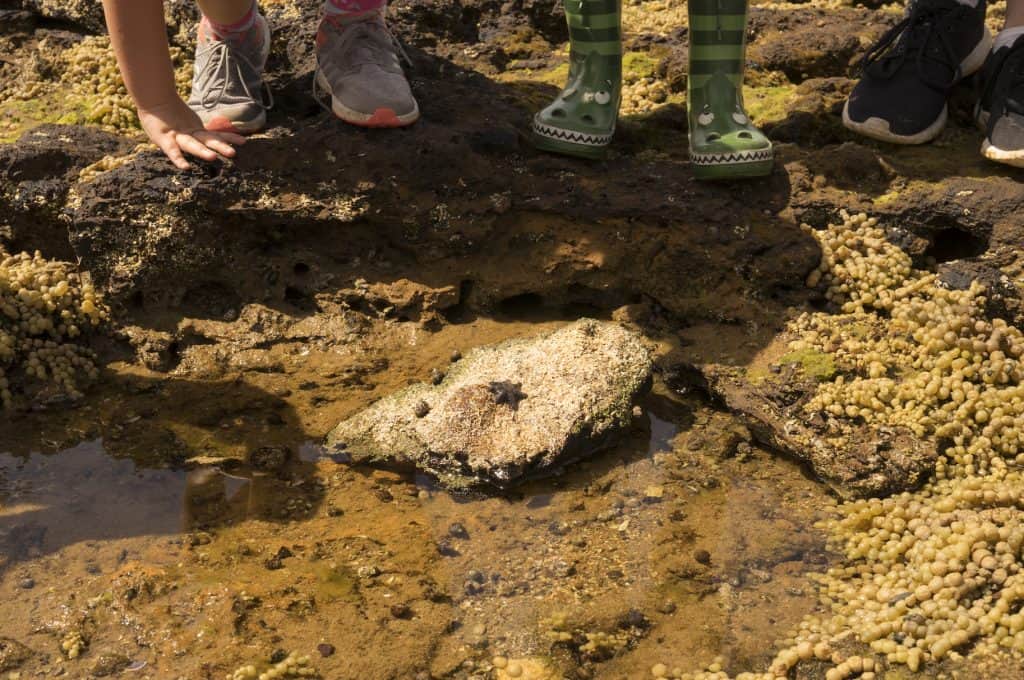I Sea Changes
-
Biodiversity
-
Human impacts
-
Living things
-
Habitats
-
Lifecycles
-
Adaptations/features

Program Overview
Through hands-on exploration and personal observations, students will discover how the habitats of Ricketts Point Marine Sanctuary provide living things with their basic needs. Students will be introduced to the amazing features of intertidal species that enable them to survive in a challenging environment and will gain an understanding of the lifecycles of common marine creatures.
Play-based activities will demonstrate how human actions can alter marine habitats and affect the creatures that reside there. Students will also be given an insight into how coastal areas where once used by the traditional aboriginal owners.
This program can be tailored to suit different levels of understanding, from topic introduction through to topic consolidation.
Your program includes:
There are two options for this program – a two-hour program which typically includes the first three of the activities listed below (unless you request an alternative) and a four-hour program which includes all five activities.
Beach Box
Inspect our collection of preserved ocean treasures and identify the features that help these marine creatures survive in the intertidal zone.
Habitat Haven
Participate in habitat-themed games on the sandy shores of Ricketts Point Marine Sanctuary. Discover what happens to creatures when human actions change their homes and what can be done to protect these fragile environments.
Rock Platform Discovery
Students will explore the unique intertidal zone and uncover the species that make this challenging environment their home.
Marine Lifecycles
Dive into the unusual world of marine lifecycles. Discover the array of coastal species that develop from eggs and undergo fascinating transformations to become adults.
Creature Features
Life in the intertidal zone is a daily battle. Students will be introduced to some of the unique features of its inhabitants and how these aid in feeding, movement and defence. Through group collaboration, students will have the opportunity to design their own marine creature.
Bush Treasure Hunt
Explore the coastal vegetation of Ricketts Point Marine Sanctuary and discover the variety of fauna that reside there. Take a step into the past and learn how this habitat provided the traditional aboriginal owners with their needs.
Both programs conclude with:
Call to Action
By defining their connection to the coastal environment, students will develop everyday actions they can take to reduce their impact on the marine environment.
Certificate and Conservation Code to reinforce learnings
Post event, schools will be issued a Certificate of Participation and Conservation Code for each class which students are encouraged to sign and hang in the classroom as a reminder of their learnings and their commitment to protect the environment.
We encourage schools to connect with us a few weeks or months after school excursions to share behaviour changes made by the students or activities undertaken as a result of their learnings during “I Sea Changes” so we can share success stories to inspire others, monitor the ongoing impact of our programs and make relevant updates or changes if required.
Restrictions: The program is dependent on tides therefore available dates are limited. More than four classes can be accommodated by special request – only available during a four-hour program.
Equipment needed: Appropriate clothing and footwear (long sleeve top, long pants, jacket, hat/beanie, soft-soled shoes e.g. runners). Students participating in the two-hour program will need to bring a snack and water. Classes undertaking the four-hour program will also need to bring lunch.
Victorian Curriculum Links:
Science: Science Understanding
– People use science in their daily lives (VCSSU041)
– Living things have a variety of external features and live in different places where their basic needs, including food, water and shelter, are met (VCSSU042)
– Living things grow, change and have offspring similar to themselves (VCSSU043)
– Observable changes occur in the sky and landscape; daily and seasonal changes affect everyday life (VCSSU046)
Science: Science Inquiry Skills
– Participate in guided investigations, including making observations using the senses, to explore and answer questions (VCSIS051)
– Represent and communicate observations and ideas about changes in objects and events in a variety of ways (VCSIS055)
Geography: Geographical Concepts and Skills
– Identify how people are connected to different places (VCGGC059)
– Collect and record geographical data and information from the field and other sources (VCGGC060)
Geography: Geographical Knowledge
– Reasons why some places are special and some places are important to people and how they can be looked after (VCGGK069)
The Victorian Curriculum F-10 content elements are © VCAA, reproduced by permission. Victorian Curriculum F-10 elements accurate at time of publication. The VCAA does not endorse or make any warranties regarding this resource. The Victorian Curriculum F-10 and related content can be accessed directly at the VCAA website.
